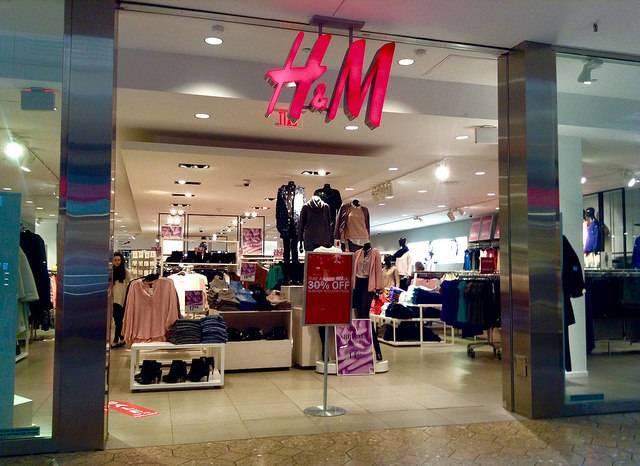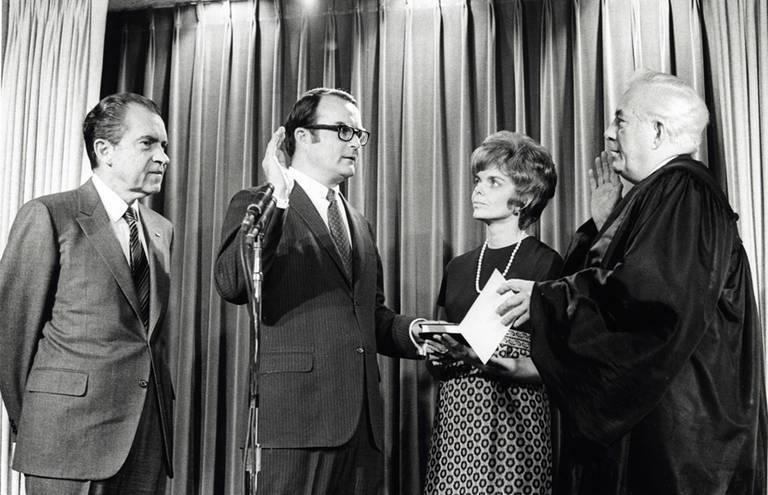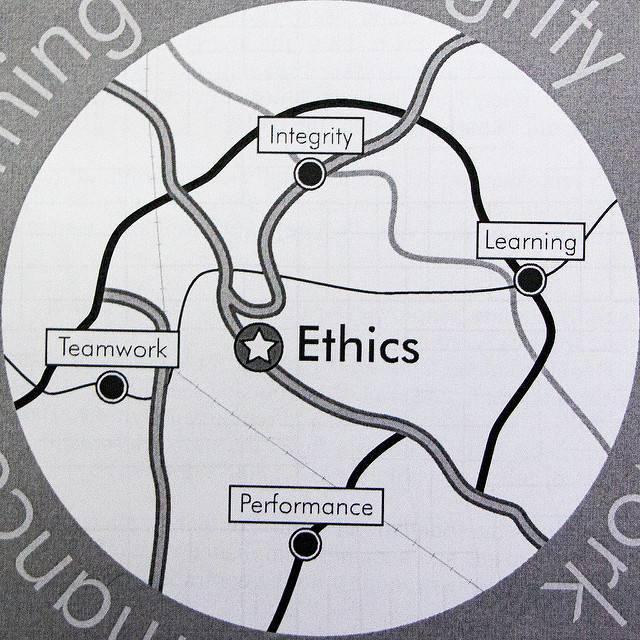Why electric vehicles are driving us towards demand management


Imperial’s new climate finance centre to ‘recalibrate’ investors’ understanding of risk


3p Weekend: 8 Companies Moving Forward on Animal Welfare


With a busy week behind you and the weekend within reach, there’s no shame in taking things a bit easy on Friday afternoon. With this in mind, every Friday TriplePundit will give you a fun, easy read on a topic you care about. So, take a break from those endless email threads, and spend five minutes catching up on the latest trends in sustainability and business.
In response to growing consumer pressure, food and retail companies around the world are shedding the animal husbandry practices of decades past and embracing welfare guidelines that respect the animals in their supply chains.
While plenty of laggards remain, the worlds largest animal welfare NGOs call out these eight companies as leading the way in their sectors when it comes to animal welfare. Let's hope their peers soon follow suit.
1. Marks and Spencer
U.K. retail giant Marks and Spencer is no slouch when it comes to sustainability. In 2014, the company claimed that over 60 percent of the products on its shelves were sustainable, a number it seeks to increase.
The company is also a leader in human rights, so its position as head of the pack on animal welfare should come as no surprise. Under its Plan A sustainability agenda, the company emphasizes food products that are fair trade, organic, free-range and cruelty-free. And its internal animal welfare standard insists animals be respected all stages of their lives – on the farm, during transportation and at the place of slaughter.
Beyond food, the company stopped selling products tested on animals back in 2006, and it has never sold fur. Marks and Spencer held the highest 'leadership' tier in the 2016 Business Benchmark on Farm Animal Welfare, produced by World Animal Protection, and continues to lead the retail industry in this area.
2. McDonald's
Some may be surprised to see McDonald's on this list. In the 1990s, the fast-food chain was often targeted by groups like People for the Ethical Treatment of Animals (PETA) for alleged mistreatment of animals in its supply chain.
But the company is turning things around. World Animal Protection says animal welfare is now "integral" to its business strategy.
McDonald's switched to 100 percent sustainable fish in 2013. A year later, the company said it would start sourcing sustainable beef in 2016 -- a move it's making, albeit slowly.
In 2015 the company pledged to transition its egg supply chain to cage-free. The process will take 10 years, but the Humane Society of the U.S. called the decision a "watershed moment for animal welfare." It's also looking to clean up its infamous McNuggets and ditch deforestation in its supply chain.
With restaurants in more than 100 countries and millions of animals in its supply chain, most movements by McDonald's will take time. But the company is well-positioned to make a serious impact, even through incremental changes, as it seeks to lead its industry.
3. Unilever
Unilever leads the way in the consumer packaged goods (CPG) industry when it comes to animal welfare. World Animal Protection also says animal welfare is now "integral" to its business strategy.
Under its Sustainable Living Plan, Unilever aims to purchase all of its animal-derived ingredients from sustainable sources by 2020. And it's already making significant progress.
It sourced nearly 60 percent of its dairy from sustainable sources in 2015, and 45 percent of its eggs were cage-free. In January another Unilever brand, Hellmann's, also pledge to phase out battery cages for egg-laying hens. (Like several Unilever brands, Hellmann's is already cage-free in Europe.)
4. Tesco
Another U.K. retailer, grocery chain Tesco also tops the animal welfare charts. It earned high marks on the World Animal Protection list and uses the Farm Animal Welfare Council's Five Freedoms to craft its animal welfare policy.
Tesco's policy protects animals from breeding and rearing through to transport and slaughter. It also does not sell personal care or cleaning products tested on animals, and only sells items like feathers or leather if they are a byproduct of food production. The company's focus on making the most of waste and byproducts is clear across its supply chain, and it is the only U.K. retailer to publish annual data about its food waste.
5. Walmart
Walmart is best known as an 'everything' big-box store, but few know it's also the largest food retailer in the U.S. After years of pressure from consumers and NGOs, in 2015 Walmart adopted a welfare policy animal protection groups called "groundbreaking."
The policy was especially noteworthy, the groups said, because it engages the company’s entire supply chain and covers a wide range of issues -- from antibiotic use to housing systems. "The policy applies to all of the company’s U.S. operations, including its subsidiary, Sam’s Club," 3p's Gina-Marie Cheeseman reported.
"Walmart is committed to selling products that sustain people and the environment,” Kathleen McLaughlin, president of the Walmart Foundation and senior vice president of Walmart sustainability, said in a statement announcing the new policy. “We have listened to our customers, and are asking our suppliers to engage in improved reporting standards and transparency measures regarding the treatment of farm animals.”
The company now receives respectable marks on the World Animal Protection scorecard, and earned recognition from the likes of Mercy for Animals and the Humane Society of the U.S.
6. Wendy's
Wendy's rolled out its first animal welfare guidelines in the mid-1990s and began routinely auditing its suppliers. It established an Animal Welfare Council in 2001. Made up of executives from across the company, the council is tasked with regularly reviewing and strengthening Wendy's animal welfare standards.
Its standards now include housing, transportation and slaughter requirements for cows, pigs and chickens across its supply chain. America's third-largest hamburger chain also pledged to switch to cage-free eggs by 2020, and it's making progress on phasing out antibiotics.
NGOs are mounting pressure on food companies to phase out the unnecessary use of antibiotics, arguing overuse of antibiotics in farm animals can expedite antibiotic resistance in humans. Only two years ago, Wendy's was considered a laggard in this space -- earning a failing grade in a 2015 scorecard from the Natural Resources Defense Council and other NGOs. After testing antibiotic-free chicken in some markets and taking steps to improve its antibiotic policy, the company bumped that up to a C grade on the 2016 scorecard.
7. Nestle
Nestle has come under increasing fire in North America for its water-sourcing practices. But the global food and beverage giant is making significant strides toward greater animal welfare.
Nestle became the first major food company to form an international partnership with an animal welfare organization when it linked up with World Animal Protection International in 2014. The resulting welfare policy aimed to phase out veal crates for calves, gestation crates for pigs and battery cages for egg-laying hens.
The company extended its policy across its supplier base. It pledged to work with suppliers found in violation of its code, and cut ties with suppliers who failed to comply. World Animal Protection recognized Nestle for its established welfare policy, while noting it still has work to do.
8. Chipotle
Chipotle was a fast favorite among the sustainability set.
In 2013, it became the first fast-food company to disclose all the ingredients in its menu items, including genetically-modified (GMO) foods. Two years later, it drew cheers from the animal welfare community when it cut ties with a major pork supplier for violating the company's standards -- even if it meant a shortage of pork at hundreds of restaurants.
After a highly public outbreak of E. coli, salmonella and norovirus in 2016, the company's position faltered a bit. The company continued to be outspoken about its vision for healthy, natural and humane food. And earlier this year, it rolled out a new animal welfare policy in partnership with Compassion in World Farming USA and the Humane Society of the U.S.
World Animal Protection notes that Chipotle is still working to implement its policies, but as a fairly new company compared to its competitors in the space, it's making good progress so far.
Image credit: Pexels
Why H&M Should Invest in Healthy Ecosystems


We all agree that climate change adaptation and mitigation are necessities for any company with manufacturing and logistics considerations. First, these industries are carbon intensive, and second, their normal business operations stand to be impacted by climate change. And it makes good business sense to be prepared.
H&M's commitment to "climate positivity" takes it one step further. The apparel company pledged to not only take responsibility for its own carbon footprint, but to take the advanced step of leaving the planet, carbon-wise, better than it found it.
Getting to carbon neutral should be fairly straightforward -- renewable energy and energy efficiency account for 96 percent of H&M's operations. But capturing that last little bit of impact, and tackling impact up and down the supply chain, requires a new perspective and a commitment to investing in carbon sinks inside and outside the company.
But how to choose where to invest? During the recent Change Makers event in Stockholm, convened by H&M, Johan Kuylenstierna from the Stockholm Environment Institute challenged the apparel company to "be bold" and think beyond traditional carbon offsets to inspire its whole sector.
Traditional best practices compel a company to offset its carbon footprint with projects that support restoration in areas where it has a negative impact. For example, a beverage company should invest in restoring waterways. But it isn't always so simple or straightforward.
The most material option might also be the most expensive, or technically unfeasible. So companies should choose its own mix of restorations and offsets to hopefully maximize impact.
In the case of H&M, the company's impact is largely in the production of fabric -- turning cotton and polyester filaments into thread and sheets of fabric. These manufacturing processes require a lot of energy and therefore carbon. But since they take place in factories, choosing a materially relevant restoration path isn't straightforward.
During the event, WWF's Paul Chatterton urged H&M to pursue landscape restoration for its climate positivity commitment.
"Landscapes are a great way to package many problems and solutions efficiently," he explained. While "landscape restoration" evokes images of my dad mowing the lawn, it's a lot more complex. It takes reforestation and tree-planting programs, commonly cited carbon sinks, much further.
The problem with tree-planting programs is in the execution. The ecological value of a forest is more than the sum of its trees. Forests are habitats for bugs and birds, larger animals, and foliage of all kinds. And the ecosystem works as a whole to filter air and water. When a forest is clearcut for lumber, these ecosystem services disappear along with it. A reforestation project that plants hundreds of rows of seedlings is merely a tree farm. The ecosystem services won't magically return without extra support.
Landscape restoration brings the concept of tree-replanting to its logical completion, restoring ecosystem services along with providing the carbon sinks or trees and soil. Ecosystem services are a whole host of benefits natural habitats offer including clean air, clean water and natural habitats for animals.
WWF discovers, develops, structures and funds landscape restoration using a mix of funding sources including corporate funding from organizations like H&M, public funds and grants.
For example, a current project in Virunga National Park - a UNESCO World Heritage Centre is a natural habitat for hippos, mountain gorillas and thousands of other species thanks to the range of microhabitats in the region: steppes, savannas and plains, marshlands, mountains and volcanos. The park is at risk from poachers and illegal deforestation. The WWF program invests in restoration and sustainable commerce programs that allow locals to earn revenue from this treasure without destroying it.
A project currently under development in Cambodia could restore tigers to their former hunting grounds if WWF can find the right partners.
While landscape restoration projects do cost more than some other simpler carbon offsetting programs, their benefits are self-perpetuating -- which means we can permanently restore ecosystem losses and a one time investment can provide benefits for years to come. H&M could invest in programs in countries where its garments are manufactured or have been in the past, giving back to the families of the garment workers in its value chain.
Another great option for H&M, proposed by Johan Kuylenstierna, is soil restoration. Large scale agriculture has the same negative impact on ecosystems as clearcutting -- it not only removes the services a natural ecosystem provides, but it also removes the ecosystem's ability to self-correct and recover.
Soil degradation is a threat to 40 percent of the world's dry land, Kuylenstierna said. "Industrial agriculture sits behind much of what we are wearing today. So H&M should invest 40 percent of profits in recovery," he quipped.
When soil is healthy, fewer chemical fertilizers are needed and the soil serves as a natural carbon sink. Investing in healthy soil would provide many of the same long-term sustaining benefits as landscape restoration while also offering the materiality benefit of restoring a system its operations degraded.
If H&M truly turns itself "climate positive" through a rigorous program like that developed by WWF, the retailer will be a global leader and could inspire retailers throughout its industry, leading us to truly feel positively about climate change!
Image credits: 1) Flickr/Mike Mozart; 2) and 3) Paul Chatterton, WWF
H&M provided travel funding, opinions are my own.
Trump Should Follow Nixon's Lead on the Environment


By Evan Lund
Throughout his life and increasingly so since he's become president, Donald Trump has attracted a wide range of labels and nicknames; some good, most bad. Occasionally, those labels, like "villain," came with a comparison to another publicly-perceived villain: President 37, Mr. Richard Nixon.
As the only president to resign from office, some might find the comparison offensive, but Trump doesn't seem to mind. In fact, he's a fan of the former president and borrowed some of Nixon's campaign tactics for his own run at office. Adorning the wall of his Oval Office is a highly favorable letter Trump received in December 1987 from Mr. Nixon, wherein Mrs. Nixon predicts an election win whenever he so chooses to run for office.
The two men have partied together and are now part of the same historic club. Time will tell if they share more in common than their disdain for the liberal media and shepherding of the "silent majority" as "outsiders." One year from now, we'll have a more informed perspective from which to judge - one based on actions, not just tweets. However, in one regard, I hope that the comparison holds up: hopefully Trump ends up remembered for advancing renewable energy the way Nixon is remembered for transforming environmental policy.
For a president whose time in office resulted in the sharpest decrease of federal funding for science research in modern history and who abolished the scientific advisor position, the only one to do so, Nixon remains -- arguably and ironically -- our greenest president yet.
In his first State of the Union address, he outlined an aggressive 37-point program geared toward cleaning up the environment and curbing pollution: the initial framework of a comprehensive plan leading up to the National Environmental Policy Act signed into law on January 1, 1970.
What followed was a policy outpouring that by today's partisan standards seems impossible: the creation of the EPA and NOAA; and passage of the Clean Water Act, the Clean Air Act and then Endangered Species Act. In total, 14 pieces of legislation signed by Nixon remain the bedrock of our environmental policy today, and consequently, frequent corporate litigation.
One might assume that Nixon, riding high from his victory and attempted "monkey wrenching" of Vietnam peace talks, was secretly a devout environmentalist. However, as his own EPA administrator would admit, he "wasn't personally gripped" by environmental issues. Indeed, Nixon lumped environmentalists into the anti-war camp, and believed they both "reflected weaknesses of the American character."
Within his cabinet, he expressed no sympathy for tolerance regarding the matter. Walter Hickel, former pro-oil governor of Alaska and Nixon's Interior Secretary, had a surprise change of heart soon after taking the post and became an ardent defender of the environment; he was soon fired for "certain things that happened" and what insiders called his "outspoken independence." So, what prompted Nixon's contradictory actions?
By the end of the 19th century, the Industrial Revolution had ushered in a new age of coal-driven mass production, infrastructure expansion that opened new commerce channels, and a population boom necessary to sustain America's emergent industries. World War I initiated a mass assembly race, as the speed and efficiency of the assembly line transformed industrial production for those countries in conflict.
Soon after, America experienced cultural and societal upheaval during the Roaring Twenties: a period renowned for capital gains, decadence, and a transition to populous city living. World War II engendered a vast mobilization effort fueled by lucrative government contracts to increase industrial capacity.
As the first half of the 20th century concluded, petroleum had emerged as the primary source to fuel this evolving growth. In 1900, petroleum as a source of energy production made up 4.8 percent of total U.S. energy production. By 1954, the number was 40 percent and climbing, as every sector -- electricity, transportation, industrial -- became heavily dependent on oil.
While the preceding century solidified our position as an innovative superpower, the 1960s were marked by the requisite counter-reaction; widespread activist movements against injustices, and among the causes gathering momentum during this time was environmentalism.
In 1965, President Lyndon Johnson addressed Congress on "Restoring the Quality of our Environment," presenting the findings of a report prepared for him by his Science Advisory Committee on the potential dangers rising carbon dioxide levels may pose. By 1970, the percentage of Americans who considered air pollution a serious problem had reached nearly 40 to 70 percent increase from 1965. This surging domestic crisis represented another faction of an increasingly powerful leftist movement that was consolidating opinion outside of Washington.
Inside Washington, Edmund Muskie, a life-long environmentalist, was consolidating influence in the Senate.
In 1963, as chairman of the new Senate Subcommittee on Air and Water Pollution, Muskie was a vociferous advocate for environmental reform before it emerged as a cause worth a politician's efforts.
For the next decade, "Mr. Clean," as he was known on Capitol Hill, sought to break down the complexities of changing the public's perception of pollution. He recognized environmental pollution as a bane to public health, and in 1964, held pollution hearings in major cities to raise public awareness.
The Clean Air Act of 1965 was the first piece of legislation establishing emissions standards for vehicles; the Water Quality Act of 1965 followed shortly after, authorizing federal regulation in cases involving inadequate standards established by states for interstate waterways. Following their passage, amendments to both Acts strengthened pollution control measures in the years leading up to the 1968 election, where Muskie joined Hubert Humphrey on the Democratic ticket as the vice-presidential candidate.
Nixon won that election, and it was he who strode into the White House, and he who painted his thumbs green once he learned it was fashionable. The Clean Air Act of 1970 and Clean Water Act of 1972 may have been signed into law by Nixon, but were forged from the tireless efforts of Sen. Muskie.
Since its inception, the EPA has elicited red-faced litigation. To be fair, critics have had reason to denounce the agency; for example, states still fail to meet national water quality standards today despite the Clean Water Act's mandates. However, no policy is perfect and a more accurate indication of success or failure accounts for benefits gained and total number of people positively affected.
Between 1970 and 2013, the country experienced a 68% reduction of emissions from six of the most common air pollutants -- an impressive accomplishment considering the GDP more than tripled, energy consumption rose 44 percent and the population grew 54 percent during that time. Assessing the effects of the Clean Air Act from 1970 to 1990, an EPA study concluded the pollution reductions prevented 205,000 premature deaths.
Regardless of whether Nixon's actions arose from some moral sense of obligation or opportunistic guile or political convenience, what matters is that words became actions and plans became policy amid an administration hostile toward science.
From the beginning of his tenure, President Barack Obama was adamant about restoring "science to its rightful place" and harnessing "the sun and the winds and the soil to fuel our cars and run our factories." He published an article in Science, "The irreversible momentum of clean energy," the first sitting U.S. president to do so. His administration decreased our dependence on foreign oil and strengthened alternative energy options, doubling solar and wind capacities.
But plenty of critics said Obama was too much talk and not enough action when it came to establishing bipartisan support for renewable energy development and implementing enforceable energy policies. Although he may have elevated the conversation, there's still plenty of work to be done.
This presents an opportunity for President Trump. Solar is now the cheapest form of energy, and although it's not an option yet for the U.S. to rebuild its entire infrastructure, solar does open the door developing nations seeking renewable energy options.
If President Trump wants to compete with China, he should pay attention to how they're moving away from fossil fuels and investing heavily in renewable technologies. If Nixon jumped on the environmental bandwagon because it was convenient, it wouldn't hurt Trump to take another page out of Dick's playbook.
While his current public approval rating is low, renewable energy is trending. It's worth noting that 64 percent of Americans worry a great deal about global warming. In alignment with those concerns, 65 percent of Americans give priority to developing alternative energy sources compared to 27 percent who favor expanded production of fossil fuel sources.
Submitting to the majority and charting a path toward energy independence via cleaner, alternative sources is an investment in the economy and at least a nod to those people worried about the impending dangers of climate change. And sure, this would contradict some of his campaign promises about coal and oil, but he's already shown that he's not married to things he's said in the past. It's impossible to predict with Trump will do as President, but one thing is for certain; we need a relentless public front that unifies our shared concerns and more people like Edmund Muskie in public office, especially if we have a man like Nixon as President.
Image credit: U.S. Government Archives via Wikimedia Commons
Evan Lund is a former scientific researcher based in Chicago. He started a research scientist interview series called B-sides and Research that you can visit here.
Monday: Senate Committee to Hold Climate Change Hearing Near Mar-a-Lago


Climate change adaptation is not a priority for U.S. President Donald Trump and company. Meanwhile, the planet’s atmosphere is still flush with greenhouse gas emissions and the effects of climate change are being felt.
While the Trump administration denies climate change and rolls back the Obama administration’s environmental protections, some members of Congress are taking action. The Senate Committee on Commerce, Science, and Transportation will conduct a committee field hearing on climate change this Monday, April 10 in West Palm Beach, Florida where Trump’s Mar-a-Lago resort is located. The hearing titled “Extreme Weather and Coastal Flooding: What is Happening Now, What is the Future Risk, and What Can We Do About It” is being lead by Sen. Bill Nelson (D-FL), the ranking member of the Committee.
The hearing will “examine the impacts of sea level rise and extreme weather events,” the Committee states on its website. A discussion “on the economic impacts of extreme weather and coastal flooding to communities, as well as future risks and efforts to address the problems” will be lead by Sen. Nelson. The hearing will feature witnesses that include various experts on the impacts of extreme weather such as Dr. Leonard Berry, PhD, Emeritus Professor of Geosciences at Florida Atlantic University; and Vice President of Government Programs at Coastal Risk Consulting, LLC.
“Sea level rise and coastal flooding driven by climate change pose real, significant risks to our residents and should not be politicized,” said Republican Palm Beach County Commissioner Steven Abrams in a statement. “At the same time, this challenge presents Palm Beach with the opportunity to be the Silicon Valley of adaptation. To do so, we need to face this threat head-on by putting in-place workable solutions that keep our homes and businesses above water.”"Extreme weather and destructive flooding along Florida's coast is one of the most visible manifestations of a changing climate,” said Christina DeConcini, Director of Government Affairs, World Resources Institute in a statement.
Florida is on the front lines of climate change
The committee pinpoints something interesting: sea level rise in southeast Florida. Southeast Florida has seen sea level rise triple since 2006, “averaging about nine millimeters a year,” according to the hearing announcement. Sea level rise has impacted southeast Florida with coastal flooding, saltwater intrusion, storm surge, and land erosion.“Sea-level rise is as clear a signal of climate change as increasing carbon dioxide concentrations and global temperature trends,” proclaimed a 2010 report by the Florida Oceans and Coastal Council (FOCC). Florida’s infrastructure is not currently able to withstand the sea level rise that climate change is bringing. Tidal floods are even a given in some Miami neighborhoods. As the report stated seven years ago, “Virtually none of Florida’s infrastructure was built to accommodate significant sea-level rise.” To accommodate sea level rise, most of coastal Florida’s infrastructure will need to be either replaced or improved.
Four county governments in southeast Florida responded to the impacts of sea level rise by creating the Southeast Florida Regional Climate Change Compact in January 2010. The four counties (Broward, Miami-Dade, Monroe, and Palm Beach Counties) have a combined population of 5.6 million. Former President Obama said of the compact that “its become a model not just for the country, but for the world.” And the compact does serve as a model of regional climate change action.
Southeast Florida is not the only region in the U.S. that will be impacted by climate change. Every region will be affected in some way and that makes the hearing by the Senate Committee on Commerce, Science, and Transportation one of the most important upcoming congressional hearings. The Trump administration will likely keep on denying climate change, but there are congressional members who not only believe it is occurring but think we need to study its potential effects.
Image credit: Wikimedia/Artistic Impression
How Printer Cartridges Could Change Patent Law as We Know It


What’s the value of a lowly printer cartridge? Huge, in today’s startup market.
Last month, the Supreme Court heard oral arguments in a suit between printer manufacturer Lexmark and a small business that makes its money refilling printer cartridges. The issue, on the surface, if fairly boring: Printer giant Lexmark sued small-time printer cartridge refiller Impressions Products on the basis of patent violation.
Lexmark’s argument went like this: The manufacturer puts a shrink wrap on its cartridges, informing the consumer that the cartridge belongs to Lexmark. Opening that wrap implies the consumer agrees with the terms of use and that Lexmark is the sole authorized source for refilling those cartridges.
Up to now, Lexmark hasn’t had a lot of joy in winning cases on this point (and it’s sued a lot of resellers arguing various viewpoints). But last year that changed when a U.S. Court of Appeals found that Impressions violated Lexmark’s patent.
Impressions, of course, appealed the ruling, and last month the Supreme Court began the laborious process of sorting out the issues of this onerously complex case. As the SCOTUS Blog explains, the issue at hand is what's called patent exhaustion, in which “a patentholder’s rights to enforce its patent ordinarily are ‘exhausted’ with regard to any particular object at the moment the patentholder sells the object.”
Normally, that might seem pretty straightforward: The manufacturer of blue widgets sells a widget to a consumer, at which point the buyer is free to do whatever she/he chooses to do with it, including “repair” it.
But Lexmark’s argument is that it has the right to set conditions, and what’s more, the right to devise different types of contracts according to the product sectors it designs. Ergo, it has the right to say whether the consumer can resell the cartridge, and whether the refilling store can then refill and resell the item to other customers.
As several observers noted, the justices seemed a bit frustrated and confused about elements of this case. Justice Anthony Kennedy wanted to know why the issue of patent exhaustion hadn’t been codified already (with definitions and limitations under the law), as copyright exhaustion had been.
Justice Stephen Breyer, on the other hand, appeared somewhat skeptical of Lexmark’s argument, noting: “[Any] monopolist, including a patent monopolist, would love to be able to go to each buyer separately and extract from each buyer and user the maximum amount he would pay for that particular item. …. But by and large, that’s forbidden under many laws.”
So, you’re probably wondering: What’s the big deal when it comes to a seemingly boring debate over the rights to a printer cartridge? Whether or not Impressions can continue refilling Lexmark cartridges and selling them for, say, half the price Lexmark may charge its customers? That has limited impact on commerce at the end of the day, right?
Well, actually, no. The outcome of whether patent exhaustion can be affected by a manufacturer putting a shrink wrap on its product and defining what a customer can and can’t do with the new purchase can have monumental impact on many products we buy on a daily basis.
Obvious examples include the various replacement parts for cars or the repaired components in a computer. A ruling giving Lexmark contractual control over its products could conceivably define what thrift stores can accept, fix and resell. It could have huge implications on assumptions we, as consumers, have formed our purchasing habits around. As Costco stated in an amici curiae brief in support of Impressions:
"Goods of all kinds — computers, smartphones, automobiles, and even medicines — incorporate innumerable components made throughout the world. Each product developer and manufacturer would be required to trace to origin the patent rights of every single component it purchases. If it turns out that any individual component was first sold abroad—or even domestically, but subject to a condition on future reuse or resale—the manufacturer would then be required to negotiate an appropriate licensing agreement."
One perceptive writer dubbed this the "Citizens United of products" to highlight the fact that an equally banal case about whether companies have a constitutional right to make political contributions morphed into an issue that is now defining political elections.
But it also points to something else: The common assumptions upon which Western society bases its behaviors are being constantly upended by craftier arguments designed to circumvent practicality – and often in lieu of the consumer's understanding.
One would think the main reason a printer manufacturer sells ink cartridges is to complement the use of its key product, the printer. But in fact, the printer manufacturer really makes its money from the hefty price of ink cartridges – not the printers.
As Caroline Said of SFGate points out, the exorbitant price tag of a toner cartridge has spurred a no-holds-barred business marketplace from startups who know they can beat the shelf price and still make money.
I can’t help but wonder the implications for innovation if Lexmark wins this case. So often it’s the little guy’s ingenuity that brings about smarter, more ecologically-friendly answers to things. Stifling that input means competition will have less say in how “smart” a product design is, and a harder and more costly time arguing the case for resource-friendly change.
There probably won’t be any further discussion on this case by the Supreme Court until it rules in June.
Image credit: Flickr/Collin Anderson
How Changes in Rainfall Impact the World Economy


By Kayla Matthews
An afternoon rainstorm might seem like an inconvenience at times, but rainfall is an essential part of the world ecosystem. Most of us know this.
But did you know that rainfall also inadvertently affects the economy, too?
Climate change is altering the global rainfall patterns, leaving industries around the world scrambling to adapt to these changes. How will the changes in the rainfall patterns affect the global economy?
Damaging weather patterns
We’ve seen changing weather patterns cause millions of dollars in home and business damage just over the past year. The drought in California, for example, which spurred unprecedented water restrictions across the state, ended with massive amounts of rain that caused extensive flooding. In one case, the deluge of water nearly compromised the Oroville Dam, sparking the emergency evacuation of more than 180,000 people.
The dams themselves aren’t built for this kind of extreme weather change, which will likely become a problem in the future. Scientists believe that these extreme drought-flood cycles will likely continue.
On the other side of the spectrum are storms. Places like Louisiana, which is known for its hurricanes, are being slammed with tornados. While it is difficult to pin the blame directly on climate change, many scientists believe that these aggressive weather trends are both tied to climate change and will continue to get worse as the planet continues to warm.
Property damage costs, as well as the cost of repair and reinforcement, will likely become a huge factor in the coming decades. While this can be beneficial for certain sections of the economy, it could slowly decimate the spending capability of the private sector, as well as drive up insurance prices in affected areas. These fluctuations mean protecting a home or business from unpredictable weather patterns is more difficult that it has been in previous years, and it will likely continue to get more difficult as the climate changes.
Impacts on agriculture
Much of the farming industry the United States relies on irrigation. The United States Geological Survey estimates 61 million acres are irrigated per year, using upwards of 128,000 gallons of water every single day. These numbers have dropped in recent years, with the introduction of more water-efficient irrigation systems.
Outside the United States, a good majority of organized agriculture relies on rainfall to sustain their crops. Around 60 percent of crops in developing countries would not survive without regular rainfall.
Climate change could result in one of two possibilities for these rain-fed areas — either there will be too much rain, and damaging storms will ruin the crops, or there will be too little rain, leaving the plants starved for water and farmers scrambling to find irrigation alternatives. Either way, climate change has the potential to negatively affect economies and make it more difficult for farms to produce food.
Changing ecosystems
Ecosystems tend to change slowly, allowing the plants and animals to gradually adapt to the new environment. The changes we are observing in our global climate, however, are occurring faster than flora and fauna can adapt to, causing many of them to change their feeding and breeding patterns, move to new areas or even die out.
A study completed in 2015 found that one out of every six species is facing extinction due to climate change. This reduces the stability of local ecosystems, and if those ecosystems collapse, it could potentially devastate our ability to produce food, decimating the global economy. Take bees, for example — they are one of the most prolific pollinators for the majority of our fruits and vegetables and if they go extinct, so too does the majority of our food production ability. This year, they were added to the endangered species list.
It is no longer a theory. Climate change is happening, and it will affect the way we interact with the world around us. It will also have significant impacts on the global economy unless we do something to reduce its influence. Storm damage will make it too costly to build or rebuild in a variety of areas around the country, and collapsing ecosystems will make it impossible to grow food.
Even if you’re not as worried about the economic impact of climate change, consider this: If we destroy this planet, we’ve got nowhere else to go.
Image by Anjana Menon
Ethics for Healthcare and Public Administration Professionals


By Daphne Stanford
In recent years, the “new public sector,” has emerged which expands the definition of public service administration from the government sector to include nonprofits/NGOs, educational institutions and private companies.
Because the end goal involves bettering the public good, one person at a time, it’s of vital importance that new public sector organizations maintain the highest of ethical standards. Rather than leaving the monitoring of ethical behavior in the workplace entirely to management, it can help to hire what’s called an ‘in-house health care quality professional’ to oversee and monitor ethical culture. And the American College of Healthcare Executives (ACHE) Ethics Toolkits outline the decision-making process and includes the Ethics Self-Assessment Tool to help with monitoring behavior within departments. It’s crucial that our public centers for healing and community organization be run in an ethical manner, lest people feel less-than-safe in their care and management.
Maintaining an ethical framework requires leadership that leads by example. What are some examples of ethical principles behind excellent public service? First, keep in mind that the public interest should always be at the top of your priority list: for example, government processes should always be transparent, balancing the interests of each constituency against the interest of the community, as a whole. Moreover, you should avoid partisanship, remembering that integrity and accountability are of the utmost importance.
Other ethical principles include fiscal responsibility when dealing with community-owned public resources, observance of local laws and regulations, and the promotion of social equality. If you are honest and transparent with public funds, it should follow that you support regular audits and investigations. Moreover, a belief in the law includes support of the constitution as well as dissent, in the event that a whistleblower reports mismanagement or corruption, in public office. And leaders should always respect individual differences, regardless of differences in background or opinion.
One excellent example of a scenario with a lot of potential for individual differences in opinion is the inauguration of a new president. In addition to political differences, there are also the changes in healthcare policy. NYU’s Rory Meyers College of Nursing Dean, Eileen Sullivan-Marx, warns “This period can be fraught with policy mistakes or adoption of new policies that have unintended consequences…” As a result of this added uncertainty, Sullivan-Marx encourages healthcare professionals to look to medicine’s ethical framework and principles—for example, the American Nurses Associations (ANA) Code of Ethics—when faced with a situation with a number of possibilities that aren’t clearly defined.
There are a number of scenarios in which ethics could become a necessary deciding factor in the ultimate outcome—such as when patients don’t understand the difference between beliefs or opinions and facts or evidence. The public’s willingness to engage with the evidence in a given situation could be connected to their personal or religious belief systems, making it challenging for medical providers to help patients benefit from healthcare treatments without extensive convincing.
Harvard’s Center for Bioethics recently reviewed an article by Mildred Solomon, “The Ethical Imperative and Moral Challenge of Engaging Patients and the Public with Evidence,” which outlines five ethical reasons for there to be transparent public dialogue about evidence:
"[T]o respect persons and provide for meaningful informed consent, to achieve better health outcomes, to support effective stewardship of public resources, to enhance the just distribution of the benefits gained from health care and health research, and to build public trust."
Of course, this is easier said than done. The article also proposes three specific strategies for managing conflicts in values: advancing community-based research; facilitating community involvement in the governance of learning systems; and utilizing evidence about cost and quality.
A great example of an ethical breach of conduct is the Seattle Times’ story about Providence Health & Services that details the various ways their Swedish-Cherry Hill campus managed to generate “[H]alf a billion dollars in net operating revenue in 2015—a 39 percent increase from just three years prior. It also had the highest Medicare reimbursements per inpatient of any U.S. hospital with at least 150 beds.” While that looks all well and good on paper, it seems unethical for patients to undergo surgeries that are unnecessarily invasive, as opposed to being offered the least invasive option. Even more concerning is the possibility that a certain doctor performed unnecessary surgeries but was still promoted to a top leadership position.
If the opportunity to get involved with healthcare-related ethical decisions or policies at a high level appeals to you, then a position in healthcare or public administration may be ideal for you. Read more about the code of ethics for healthcare quality professionals here, or get in touch with an administrator at the public policy or healthcare administrative level to see if you could sit down with them for an informational interview, or request a brief job shadowing, for part of a day. Also, the Code of Medical Ethics was recently modernized for the first time in fifty years!
Are you aware of a recent case of ethical decision making or a breach in ethics at the hospital administration or local government level? If so, please share your experience in the comments section, below!
Image Source: Mark Morgan
Daphne Stanford hosts “The Poetry Show!” on KRBX, her local community radio station, every Sunday at 5 p.m. A writer of poetry, nonfiction, and lyric essays, her favorite pastimes include hiking, bicycling, and good conversation with friends and family. Follow her on Twitter @TPS_on_KRBX.
Tracking Collaboration For Sustainability and Social Impact


The transformation of business in the 21st century has many facets and a number of common characteristics. One of these is the presence of softer, more rounded edges toward consumers when it comes to transparency, communities when it comes to volunteerism and philanthropy, employees when it comes to engagement efforts, and the environment when it comes to sustainability.
A recent report -- Collaboration for Impact -- by the consultancy Corporate Citizenship focuses on another aspect of the transformation that has taken on a softer edge, and that is the relationship of businesses to one another.
Since the whole idea of sustainability involves taking a more holistic view of your business and its broad impacts on the world, it makes perfect sense to collaborate with other entities that bring a different perspective to the table. In the language of the report, the challenges facing business today “cross politics, industries and geographies.” This opportunity “to bring about change by addressing these issues collaboratively is underscored by a growing recognition of the role of business in this respect and an increasing desire to generate greater impact.”
The authors looked at ongoing collaboration in the business world, based on a survey, with 101 respondents, primarily from the U.S. and U.K.
While most businesses opted to collaborate with nonprofits (87 percent of total collaboration projects reported by respondents), quite a few linked up with government agencies (64 percent of projects) and same-sector companies (51 percent). Respondents also reported collaborating with businesses outside their sector, totaling 41 percent of their ongoing collaborative projects. A full 23 percent of such projects involved all four categories.
Drawing from this data set, the authors recognized five distinctly different types of collaboration, which can be summarized as follows:
- The Conductor is “a single company collaborating with a number of not-for-profit partners to solve a specific challenge.” These corporate actors often focus on a single issue across a number of geographies.
- The Alliance is “a company or group of companies that have come together to tackle a specific industry issue." An alliance will often generate tools, indices or standards to which companies within the industry can commit.
- The Assortment consists of “several companies across industries working together to solve a particular societal issue, applying their resources, skills and expertise as relevant. These collaborations are often cross-sectoral, involving not-for profits and/or government bodies.”
- The Engager is “a company that engages and collaborates with its clients or customers to find solutions to sustainability issues. These types of collaboration may come about through specific corporate responsibility initiatives or through a commercial relationship.”
- The Selector is “a company that selects and collaborates with parties with varying but specific expertise across a range of fields to address a societal issue. This collaboration is the most mature model and involves taking a holistic approach to solve an issue.”
These collaborations are more important than ever, especially now as the federal government is setting itself up as a barrier to progress on critical issues like climate change. Collaboration between companies, with NGOs, and with government entities at the state and local levels can achieve as much or more than any federal initiative.
Last week at the Responsible Business Summit in New York, Atlanta Mayor Kassim Reed told an audience of business leaders they should consider a “shift to partnering with cities.” Unlike federal or even state governments, cities are small enough to get things done quickly, but big enough to have an impact. Especially since cities are banding together in groups like the U.S. Conference of Mayors where they can learn from one another. If you have a good idea, Reed said, “All it takes is me and eight votes” on the city council to get it approved.
Corporate Citizenship’s report includes a number of examples of collaboration in action. One example of the Assortment is the Australian Business and Community Network (ABCN) founded by Singtel and six other Australian companies to provide assistance to youth from vulnerable backgrounds. In collaboration with a network of public schools, they established a mentoring program that has grown to over 30 companies, involving some 33,000 volunteers and reaching over 100,000 students.
The Selector is exemplified by a three-year collaboration between IBM and the Sesame Workshop to enhance the production of the renowned children’s educational TV program "Sesame Street." IBM utilized its Watson super-computing capability to examine and explore “ways in which cognitive computing can best help preschoolers to learn.” A variety of experts in fields ranging from education and psychology to media production and advanced computing all participated in the project.
This video, although it goes back a few years, actually sums it up pretty well.
Image credit: Pexels